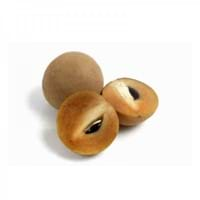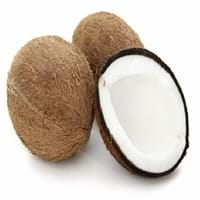Health Benefits
Anti-inflammatory properties, Arthritis treatment, Regulates Blood Sugar, Unknown
Acidity treatment, Acts as natural antibiotic, Anti-oxidant properties, Aphonia treatment
General Benefits
Boosts immune system, Controls blood sugar levels, Digestive aid
Anti-inflammatory properties, Body hydration, Boosts immune system, Controls blood sugar levels, Digestive aid, Fights against infections, Flu treatment, Healing of wounds, Helps in weight loss, Maintains healthy cholesterol level
Skin Benefits
Nourishes skin, Protects skin from oxidative stress
Anti-aging benefits, Heals sunburn, Hydrates skin, Reduces wrinkles, Skin rejuvenation, Skin revitalization, Treatment of skin diseases
Hair Benefits
Prevents hair loss, Promotes longer and healthier hair, Regulates hair growth
Promotes longer and healthier hair, Regulates hair growth, Rejuvenates scalp, Shiny hair, Treatment of dandruff
Allergy Symptoms
Asthma, Red rash, Swelling of mouth, tongue or lips
Abdominal pains, Breathing difficulty, Itching in tongue and other parts of mouth, Nasal congestion, Nausea, Runny nose, Vomiting
Side Effects
Diarrhoea, Vomiting
Allergic reaction, Indigestion, Weight gain
Best Time to Eat
As a snack in the late afternoon
Along with meal, Best if taken as a breakfast (or empty stomach), As a snack in the late afternoon, Morning time (before lunch)
Vitamin B5 (Pantothenic Acid)
Vitamin C (Ascorbic Acid)
Vitamin E (Tocopherole)
Not Available
Vitamin K (Phyllochinone)
Not Available
Lutein+Zeaxanthin
Not Available
Phytosterol
Not Available
Calories in Fresh Fruit with Peel
Not Available
Calories in Fresh Fruit without Peel
Not Available
Calories in Frozen Form
Not Available
Calories in Juice
Not Available
Calories in Jam
Not Available
Calories in Pie
Not Available
Type
Berry
Tree fruit, Tropical
Season
Winter
All seasons
Varieties
Bush Table Queen, Heirloom Table Queen, Festival Hybrid, Early Acorn Hybrid, Table Ace, Ebony and Cream of the Crop
Tall Varieties- West Coast Tall, Laccadiv Micro, Andaman Ordinary, Fiji, Kappadam, San Ramon, Philippines, Spicate, and Pratap. Dwarf Varieties- Chowghat Orange Dwarf (COD) and Chowghat Green Dwarf (CGD)
Seedless Variety
Not Available
No
Color
Dark green, Green-yellow, Orange green
Brown, Green
Inside Color
Not Available
White
Taste
Sweetish
Juicy, Sweetish
Origin
Central America, North America, Unknown
America, India
Soil Type
Well-drained
Clay, Sand
Climatic Conditions
Cold, Sunny
Hot, Humid
Facts about
- It was named as Acorn Squash for its resemblance to a large ribbed acorn.
- It is said that squash was being grown in Mexico as long as 10,000 years ago.
- It was the first food cultivated by native American Indians.
- Burning coconut's husk helps repel mosquitoes.
- Surveys say that falling coconut kills hundreds every year.
- Coconut water is used as a substitute Blood Plasma & is called "father of modern tissue culture science".
Spirits
Not Available
Yes
Cocktails
Not Available
Yes
Top Producer
China
Indonesia
Other Countries
Egypt, India, Iran, Italy, Mexico, Russia, Turkey, Ukraine, United States of America
Brazil, India, Philippines, Sri Lanka
Top Importer
UAE
United States of America
Top Exporter
India
Philippines
Botanical Name
Cucurbita Pepo
Cocos nucifera
Synonym
Winter Squash
Not Available
Subkingdom
Tracheobionta
Tracheobionta
Division
Magnoliophyta
Magnoliophyta
Class
Magnoliopsida
Liliopsida
Subclass
Dillenhidae
Arecidae
Order
Cucurbitales
Arecales
Family
Cucurbitaceae
Arecaceae
Generic Group
Not Available
Arecaceae
Difference Between Sapota and Coconut
We might think that Sapota and Coconut are similar with respect to nutritional value and health benefits. But the nutrient content of both fruits is different. Sapota and Coconut Facts such as their taste, shape, color, and size are also distinct. The difference between Sapota and Coconut is explained here.
The amount of calories in 100 gm of fresh Sapota and Coconut with peel is 40.00 kcal and Not Available and the amount of calories without peel is Not Available and 354.00 kcal respectively. Thus, Sapota and Coconut belong to Low Calorie Fruits and High Calorie Fruits category.These fruits might or might not differ with respect to their scientific classification. The order of Sapota and Coconut is Cucurbitales and Arecales respectively. Sapota belongs to Cucurbitaceae family and Coconut belongs to Arecaceae family. Sapota belongs to Cucurbita genus of Pepo species and Coconut belongs to Cocos genus of C. nucifera species. Beings plants, both fruits belong to Plantae Kingdom.









